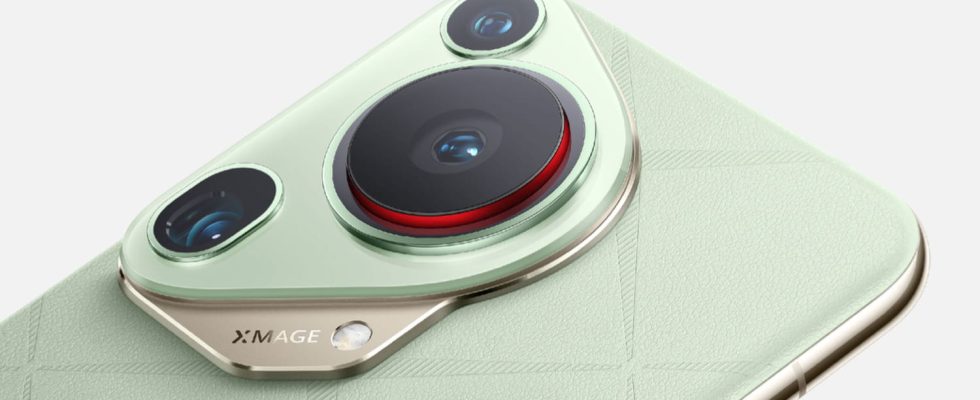While we believed that Huawei was only focusing on PCs, watches and headphones in Europe, the Chinese brand has just unveiled its new series of smartphones called Pura with an undisguised appetite for photography.
On European soil, Huawei smartphones have lost a lot of their aura. And for good reason: due to sanctions imposed by the United States in 2019, the brand can no longer use Google services and 5G networks. Without these two building blocks, it is difficult to attract users who are very attached to the comfort that Google offers in Android and to the galaxy of apps linked to the system. On the other hand, Huawei remains a major player in its home country, China, where the battle with Apple rages. Also, in fact, Huawei has never stopped offering smartphones on its land, maintaining a portfolio of a few models like the Nova for Europe.
However, things seem to be changing at the start of 2024. A week after its announcement in China, the firm unveiled in France three new high-end mobiles from the P series, now renamed Pura. The Pura70, Pura70 Pro and Pura70 Ultra will all be sold in France with pre-orders starting on May 2. And to remain faithful to its trademark, Huawei once again demonstrates its appetite for photography with an original technique introduced in the most high-end model.
Huawei Pura70 Ultra: an intriguing motorized lens
The three devices in the Pura70 series share a lot in common, starting with IP68 certification to protect them from dust and water immersion. But it is the Ultra model that is most intriguing. It is in fact equipped with a 1-inch main sensor – a very large size, which is usually found on real cameras and which remains very rare on smartphones – topped with a motorized lens with variable aperture (f /1.6 to f/1.4) which stands out slightly (a few millimeters at most) from the imposing photo island.
The goal: to provide sufficient distance between the lens and the sensor to take advantage of the entire surface of the latter while letting in as much light as possible. Clever and daring. Introducing purely mechanical elements into a smartphone that you carry everywhere requires a certain amount of confidence. Huawei indicates that it has carried out 300,000 cycles of this mechanism, which sets around a hundred parts in motion, to test its reliability. A test which, according to the brand, would correspond to five years of daily use.
However, the firm has added a small touch of security. If the smartphone falls while the lens is deployed, it retracts immediately to avoid a possible shock. This sensor also offers a focal length ranging from 13 to 2700 mm, i.e. a x200 zoom. We can’t wait to see what it turns out.
Next to this large main sensor nestles a 40 Mpx (f/2.2) ultra-wide-angle module and a 50 Mpx (f/2.1) x3.5 telephoto lens that can be used for macro not only in photos but also on video.
For the rest, Huawei adopts a fairly classic frame. The Pura70 Ultra has a 6.8-inch Oled screen with a definition of 2844 x 1260 pixels for a resolution of 460 ppi. This is an LTPO panel with a refresh rate of 1 to 120 Hz and a peak brightness of 2500 nits. Under the hood, the device has a 5200 mAh battery and is compatible with 100 W wired and 80 W wireless charging (provided you have the appropriate charger). If the device has 16 GB of RAM and 512 GB of storage space, the company has remained silent on its SoC. However, the numerous leaks which circulated before the official announcement suggest an in-house chip, Kirin 9010. An 8-core SoC engraved in 7 nm. 5G compatibility remains a mystery for the moment.
Huawei Pura70 and Pura70 Pro: less ambitious but quite expensive models
If the Pura70 Ultra inevitably takes center stage, its little brothers 70 and 70 Pro do not hide their ambitions for photography either. The 70 model (for short) has a 50 Mpx main sensor (f1.4 – f/4.0), a 12 Mpx x5 periscopic telephoto lens and a 13 Mpx ultra-wide-angle lens (f/2). ,2). The Pro model is based on the same main module but has alongside it a 48 Mpx x3.5 telephoto lens (f/2.1) providing a zoom of up to 200x and an ultra-wide lens. angle of 12.5 Mpx (f/2.2).
Few other elements differentiate the two models. A 6.6-inch flat screen for the first and a 6.8-inch curved screen on the second, 256 GB of storage space for the Pura70 and 512 GB for the 70 Pro. The amount of RAM (12 GB), the battery (5050 mAh) and 100 W charging are common to both devices.
Huawei Pura70 series: smartphones still deprived of Google services
While we were expecting the in-house HarmonyOS OS (found on the brand’s connected watches and tablets) at the heart of these new smartphones, surprise: the Pura70s run Android… but with an ASOP version , in other words the open source version of the mobile system, on which the firm applies its in-house EMUI overlay here in version 14. And, as since 2019, Google services and apps are not part of the journey. A bit annoying for all those who are used to it and who have to deal with other more or less similar apps and the in-house online store to dig into a catalog which is becoming quite extensive.
Huawei also promises two years of major OS updates and three years of security patches. However, the firm specifies that this information is indicative and that it is common for us to still benefit from updates beyond these deadlines. We hope so given the prices announced. Count 999 euros for the Pura70, 1199 euros for the Pura70 Pro and finally… 1499 euros for the Pura70 Ultra.





